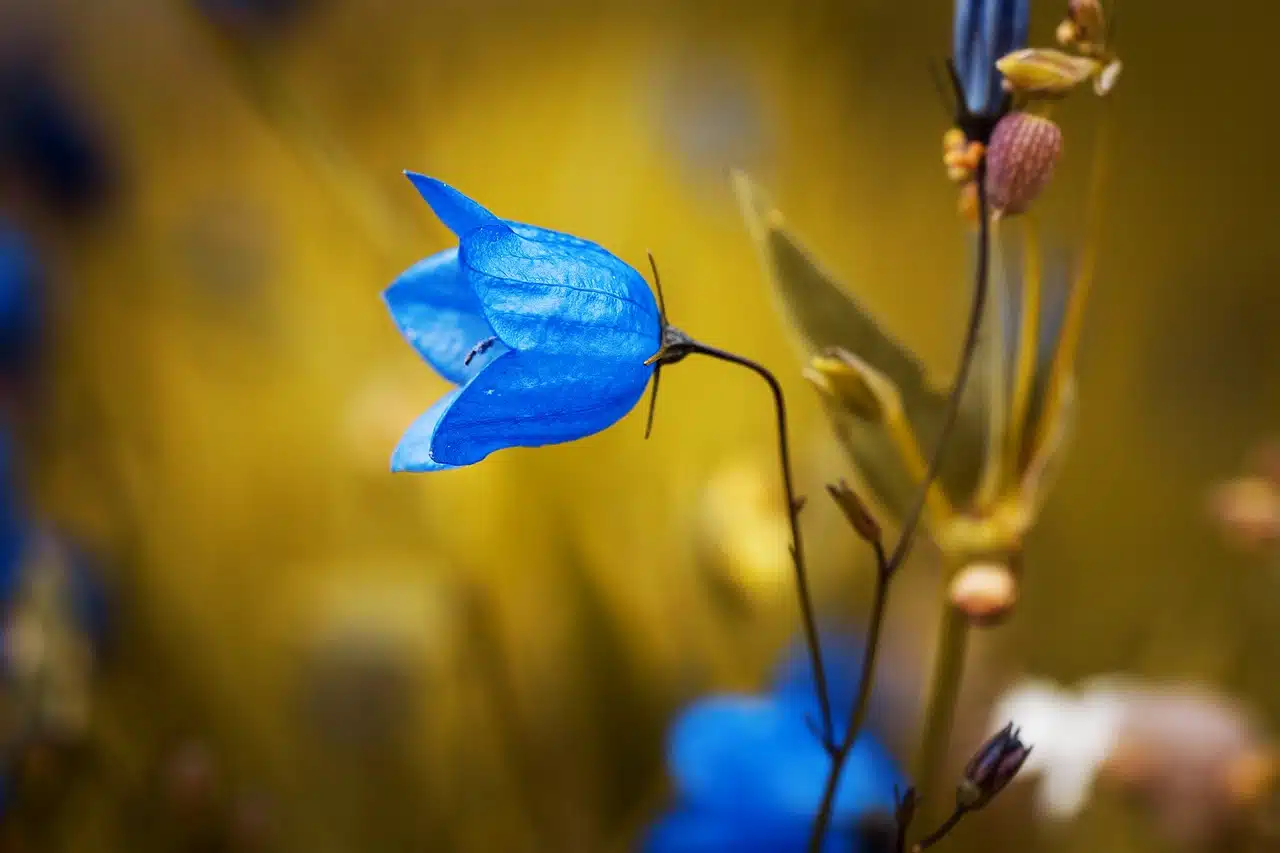
Campanula is a plant with bell-shaped flowers.
Campánula refers to a lantern : that is, to a plant that is part of the Campanulaceae family group. The term comes from the scientific Latin campanula , which translates as "little bell."
Campanulaceae
Campanulaceae ( Campanulaceae ) are a family of flowering plants found throughout the world. They comprise around 89 genera and more than 2,400 different species . They are characterized by their bell-shaped or bell-shaped flowers, hence their name.
These plants can vary in size and shape, from annual or perennial herbs to shrubs and climbers. They have a global distribution, although they are more common in temperate and subtropical regions . Some species of Campanulaceae are grown as ornamental plants due to the beauty of their flowers.
Among the best-known genera of campanulaceae is Campanula , which includes numerous popular species in gardening. Some of the most common are Campanula persicifolia, Campanula cartatica and Campanula lactiflora . Other notable Campanulaceae include Lobelia, Platycodon and Adenophora.
In addition to their ornamental value, campanulaceae play several roles in ecology . Many of its species are pollinated by insects, such as bees and butterflies, which are attracted to the nectar and pollen of the flowers. Some also produce seeds in capsules that open to disperse.
Campanula characteristics
Campanula is a plant whose herbaceous stems are striated, develop branches and can reach a height of about eighty centimeters. Its leaves are oblong and characterized by their hairiness and roughness.
As for the flowers of the campanula, they are bell-shaped and red, whitish, variegated or purple, with long peduncles. These flowers also stand out for their large size.
Campanulas are usually grown in gardens . It is a highly valued species because it is easy to grow and its flowering takes place throughout the summer.
A campanula can grow in a pot on a terrace , patio or balcony . Gardening experts emphasize that it survives in light shade or full sun and is capable of tolerating light frosts.
Among the care that demands frequent risk appears. You must also pay attention to aphids and red spiders , which are two of the animals that can affect bellflowers.
Medicinal properties
The Campanula genus has been used in traditional medicine in certain cultures to treat a variety of ailments. However, it is important to note that this is based on popular wisdom and not solid scientific evidence. It is always advisable to consult a health professional before using any plant for medicinal purposes.
Let's look at some of the medicinal properties attributed to campanula:
- expectorants : helps relieve congestion and facilitates the removal of mucus in the lungs and airways;
- Anti-inflammatory : It is believed that certain campanulaceae can help reduce inflammation in the body. This has led to its traditional use to treat conditions such as arthritis and other similar disorders;
- diuretics : increases urine production and helps eliminate excess fluids and toxins from the body;
- Antimicrobial : Some Campanulaceae species have been the subject of research due to their possible antimicrobial properties. Certain campanulaceae extracts have been shown to have activity against certain microorganisms, suggesting potential use in the treatment of infections.

In addition to its showy flower, this plant has several medicinal properties.
It is important to note that the information available on the medicinal properties of campanula, and campanulaceae in general, is limited and more scientific research is required to support its traditional uses. Furthermore, the proper preparation and dosage of medicinal plants are critical aspects that must be considered, since incorrect use can have adverse effects.
